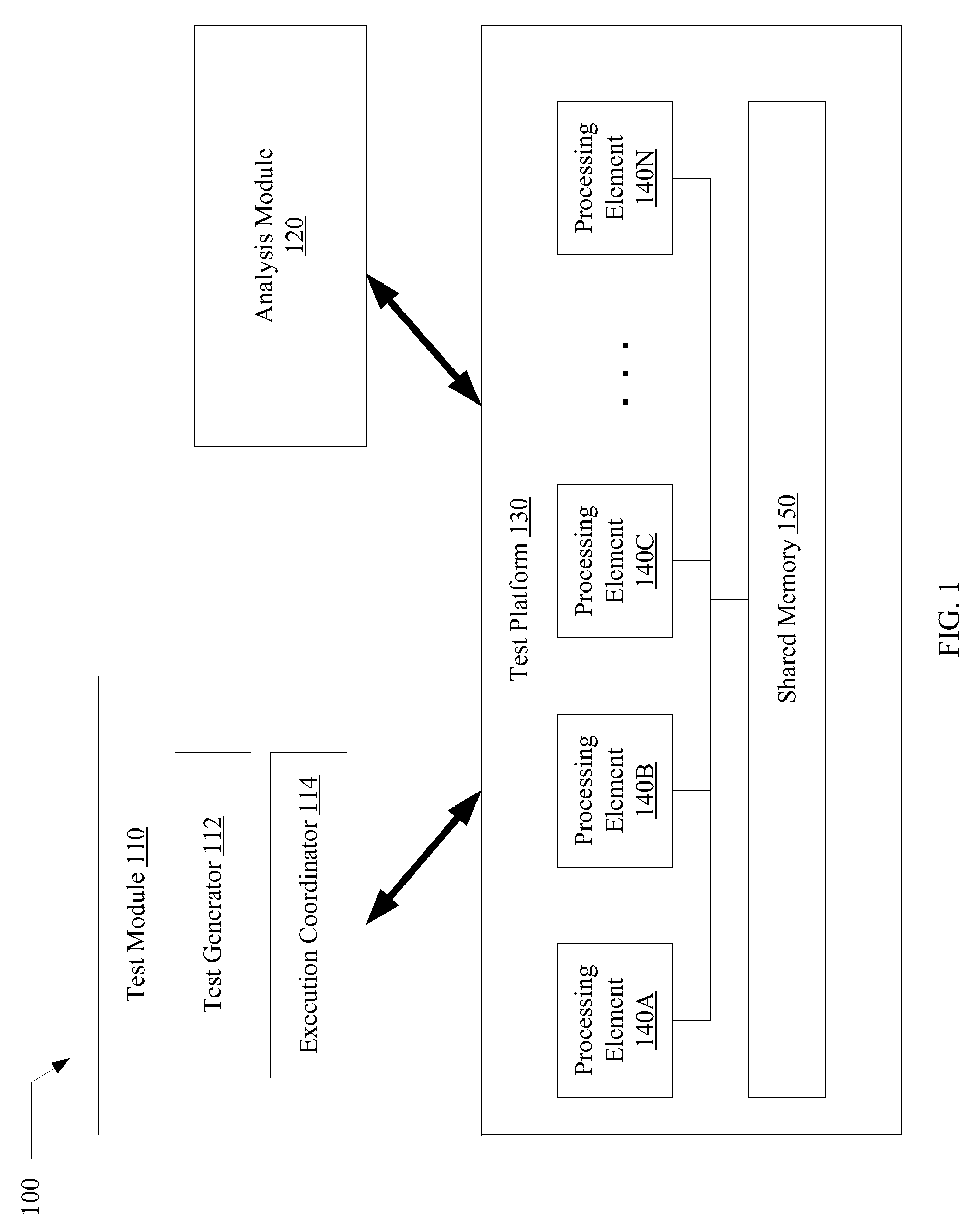Verification of memory consistency and transactional memory
a transactional memory and memory consistency technology, applied in error detection/correction, instruments, computing, etc., can solve problems such as difficult to find design problems or bugs, delay new design releases, and require post-release patches, so as to achieve efficient verification of compliance
- Summary
- Abstract
- Description
- Claims
- Application Information
AI Technical Summary
Benefits of technology
Problems solved by technology
Method used
Image
Examples
Embodiment Construction
[0025]FIG. 1 is a block diagram of one embodiment of a system 100. System 100 includes a test module 110, an analysis module 120 and a test platform 130. Test module 110 and analysis module 120 may be operable to use test platform 130 to test whether a sequence of memory operations performed in a shared memory multiprocessor computer system violate a memory consistency model (e.g., the Total Store Order or TSO memory consistency model from Sun Microsystems Inc.). In the illustrated embodiment, for example, test platform 130 may include a plurality of processing elements 140A-140N (collectively, processing elements 140) and a shared memory 150. In some embodiments, test platform 130 may comprise the actual hardware of a shared memory multiprocessor computer system, where, for example, each processing element 140 is a processor or a processing core on a multi-core processor chip. In other embodiments, test platform 130 may comprise a simulation model, e.g., a simulation model of a mem...
PUM
 Login to View More
Login to View More Abstract
Description
Claims
Application Information
 Login to View More
Login to View More - R&D
- Intellectual Property
- Life Sciences
- Materials
- Tech Scout
- Unparalleled Data Quality
- Higher Quality Content
- 60% Fewer Hallucinations
Browse by: Latest US Patents, China's latest patents, Technical Efficacy Thesaurus, Application Domain, Technology Topic, Popular Technical Reports.
© 2025 PatSnap. All rights reserved.Legal|Privacy policy|Modern Slavery Act Transparency Statement|Sitemap|About US| Contact US: help@patsnap.com



